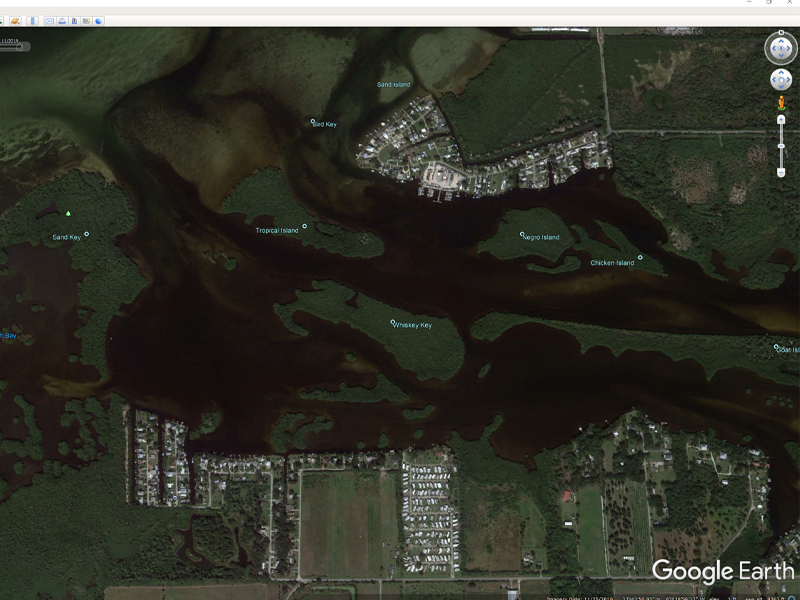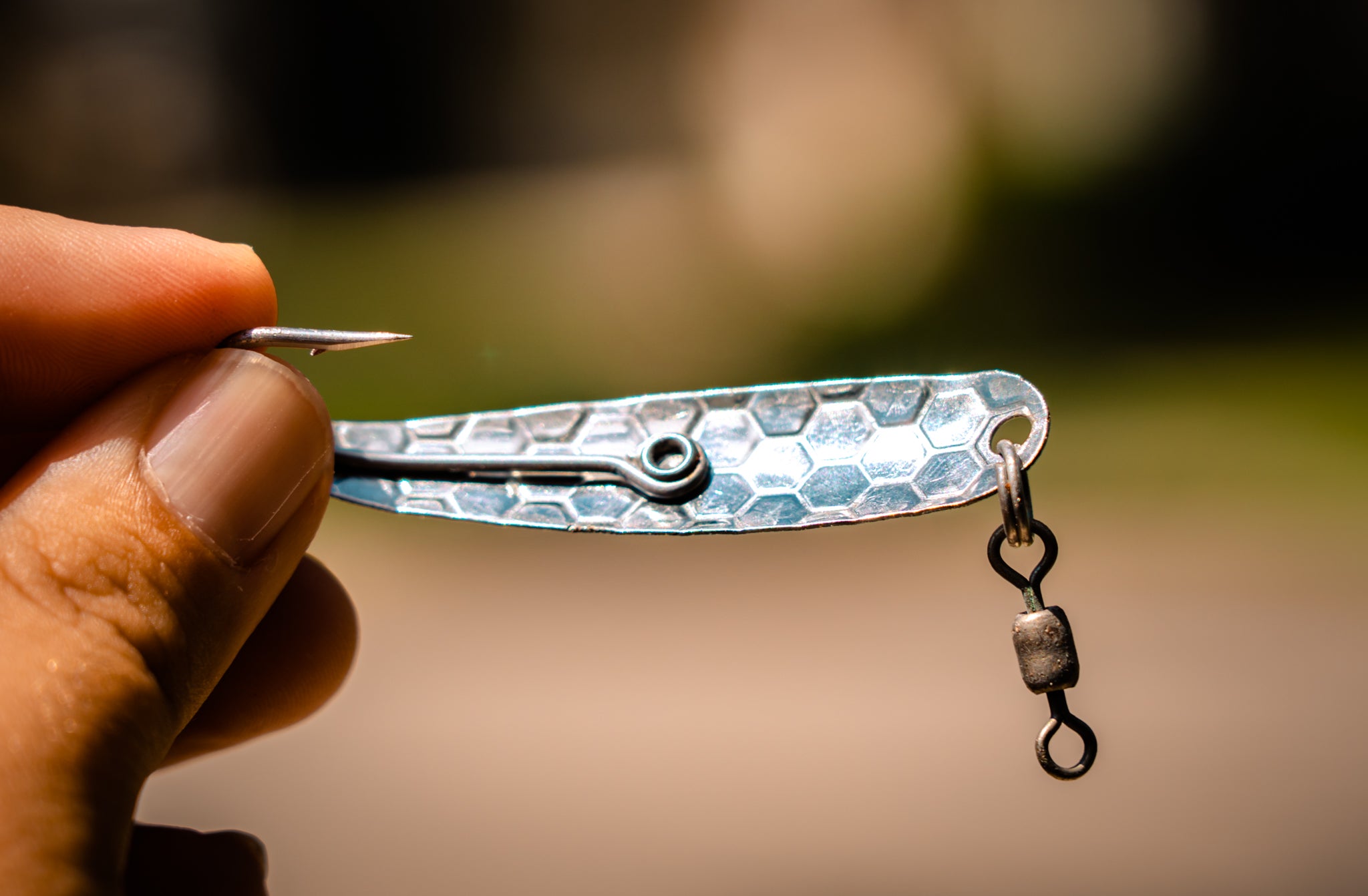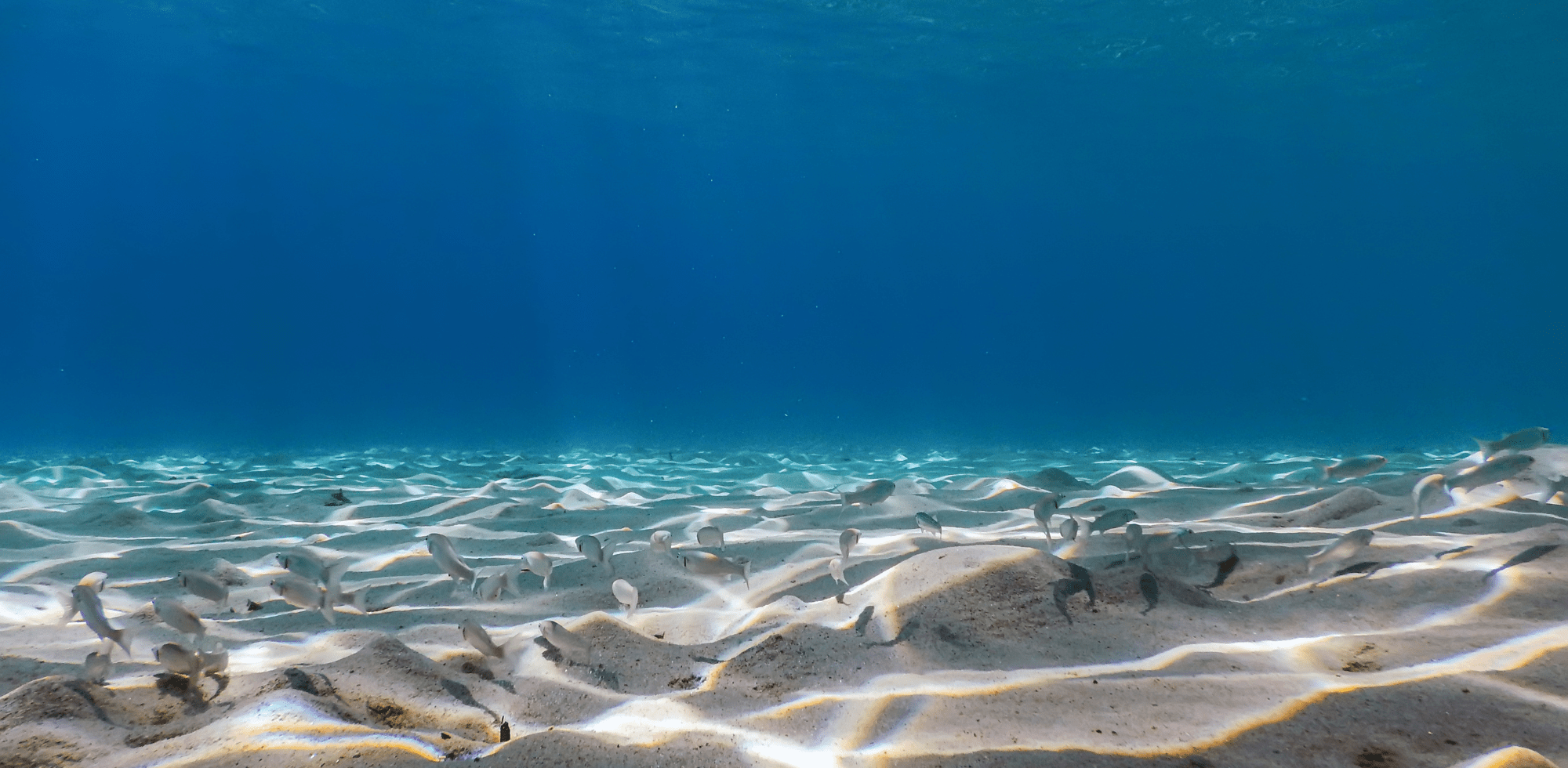Today, I want to share with you just three simple tips for keeping your bait swimming and alive five times longer. Having bait that is alive and well can help you catch the big fish you have been diligently pursuing.

Why Keep The Bait Alive?
For starters, live bait is the perfect natural squirmer. Frisky and erratic movements are ideal for attracting the big catch.
When live bait is just dangling there lifeless, the blood and other natural attractants that the fish have is not staying oxygenated and fresh. The fresh flesh is what really will reel in some of the bigger catches, and keeping the bait alive will help.
What Not To Do
Before we get into what you should be doing to keep your bait alive, let's take a look at what we should NOT be doing.
The first thing you should not do is overcrowd your bucket. The more fish in a bait bucket, the less oxygen each one of them has to breathe. We want the fish to have plenty of oxygen to stay alive, well, and squirming. Try to make sure that you have a big enough bucket that can house lots of water and bait without going overboard.
Note that when you keep too many baits in the bucket, the volume of ammonia via feces and urine builds up starving the fish of oxygen.
How To Keep Your Bait Alive 101
I have three main tips and tricks that can keep your bait wiggling around and ready for fishing five times longer than usual.
Especially in the hot Florida summer weather, bait seems to die at a constant rate. In a tropical climate, three main factors are killing your bait prematurely. Ammonia, oxygen, and temperature are the chief nemeses, but let's dissect each and take a closer look.
Ammonia
Ammonia tends to build up over time as fish defecate and urinate in the water. When the bucket's environment becomes ammonia heavy, the fish can't help but become ill and slowly poison themselves in their excretions.
Although lakes and oceans have lots of excretions from fish, the bait can't handle the sheer amount of waste in such a confined space. The ammonia builds up with minimal water volume to create a toxic environment. The water conditioner will help eradicate the build of ammonia and cause several different kinds of water changes for the bait to continue to thrive.
The use of a conditioner will help balance and rid the water of ammonia. Ammonia makes the water very acidic, and this poisons the bait. There are typically two types of ammonia solutions that can be purchased.
One type is the liquid form, which is what I like to use. The liquid form comes in a small bottle, and it doesn't take much to affect the live bait well. An entire bottle of ammonia conditioner can last you for a long time. As I said, it only takes a few drops, and you will be well on your way. The way I like to measure it out is by taking the cap off and measuring out a capsize of ammonia conditioning solution.
You can purchase a typical ammonia conditioner at a local pet shop or online. It is relatively inexpensive and will save you from having a bunch of dead, wasted bait at the end of the day.
Oxygen
The next factor that will prevent your bait from thriving in the live bait well is oxygen. When your bait sits in stagnant water, it can cause the bait to suffocate quickly in just a few short hours. In freshwater or saltwater, there are usually plants that provide sufficient oxygen to survive. When there are large populations of fish and little to no plants around to fill the water with oxygen, this can be a deadly recipe.
The same idea goes with live bait. When there are several live baitfish in a tank or bucket with no natural plants, this is catastrophic. It is essential to ensure that you have a replacement for the plants that are readily available in the ocean or freshwater ecosystems. These plants give the water much-needed oxygen, and there are artificial devices out there that can do the same.
An affordable way to replenish the oxygen source in your live bait well is to get your hands on a bubbler. A bubbler will attach to the side of your bucket and takes oxygen from the air and feeds it into the bucket of water.
It can be challenging to find the right bubbler to give you enough movement, and I have found the perfect one. There are affordable aerators online that won't break the bank and save you money on bait in the long run.
Make sure to get a LARGE stone bubbler with lots of surface area so the water can fill with lots of plentiful oxygen. It is just as simple as the more bubbles, the better. The bubbles that come from a stone bubbler means that it is filling up the water with oxygen right before your eyes. Sometimes these bubblers can even keep your bait alive for days on end. Getting your hands on a stone bubbler is a game-changer for keeping those tiny critters alive and well for every outing.
Temperature
Lastly, living in the summer heat of Florida can take a real toll on your bait. Especially in more tropical climates like Florida, temperatures rise and fall quickly due to humidity. When the sun is down in the early morning hours, it can be quite chilly and seem okay. However, the moment that the sun starts to peak up and over the horizon, it is vital to make sure your bait stays cool, calm, and collected.
It is an absolute nuisance to be adding cold water in a well or bucket continually. Doing this ends up diluting the water in the long run. Many people have suggested using ice to me in the past, but I find that this can change the salinity, ultimately killing the baitfish. For example, putting an ammonia conditioner in the bait bucket and then adding a whole bunch of ice that eventually melts is just not going to work.
I would suggest that the night before you freeze plenty of water bottles that will be frozen solid by the morning. Adding frozen water bottles to the bait bucket or well will bring down the overall temperature of the water but won't leave you with continually maintaining the cold temperature.
One thing to look out for is making sure that the live bait doesn't go into hot water shock. Taking the live bait from a cold bucket of water, putting it on your hook, and then throwing it into nearly 100 degrees Florida water will shock their system. When the temperature rises above 90 degrees suddenly after chilling and getting used to the 60-degree water, your bait won't perform nearly as well as you had hoped. I think the best tactic to combat this cold water shock is to drop a water bottle for about 20 to 30 minutes and then take it out. This way, the water temperature in the bait bucket doesn't fall too low on a temperature that your bait can't handle.
I like to use the water bottle method because unlike any other cooling process, this does allow you to pull out the cooling device and add it back in when you need to. Even ice packs would work as a suitable water bottle replacement.
Now It's Time To Keep Those Bait Alive
I hope that some of these tips were useful for keeping your bait alive. They are all relatively inexpensive ways to keep your bait living longer and end up being a significant investment in the end. All of the tactics mentioned above are great ways to keep your bait alive when you are changing locations frequently and on the road. Following these tips and tricks in mind can help you save money in the long run and keep your bait alive and squirming in the water, perfect for that next big catch!





3 comments
David
After reading this article, here’s something bew to digest.
Question: If you double the aerator output or double the size/volume of livewell water pump, does the dissolved oxygen double too? Does the dissolved nitrogen double too?
Does 21%O2 + 21%O2 = 40%O2 oxygen dissolving into the livewell water actually prevent hypoxia and suffocation in the summer?
My understanding is that if a human or bait fish is suffocating and needs more oxygen, the most logical treatment for hypoxia is supplemental oxygen administretion >21% O2.
Lack of sufficient oxygen will not only kill your bait in a matter of minutes, hypoxia will also kill all fishermen just as quickly too.
By the way; do you have any idea just how much oxygen bait fish actually need during live transport?
Hypoxia kills in 2-3 minutes. Deadly levels of ammonia take hours to become toxic. It’s a no-brainer to figure out which is the most deadly, right?
After reading this article, here’s something bew to digest.
Question: If you double the aerator output or double the size/volume of livewell water pump, does the dissolved oxygen double too? Does the dissolved nitrogen double too?
Does 21%O2 + 21%O2 = 40%O2 oxygen dissolving into the livewell water actually prevent hypoxia and suffocation in the summer?
My understanding is that if a human or bait fish is suffocating and needs more oxygen, the most logical treatment for hypoxia is supplemental oxygen administretion >21% O2.
Lack of sufficient oxygen will not only kill your bait in a matter of minutes, hypoxia will also kill all fishermen just as quickly too.
By the way; do you have any idea just how much oxygen bait fish actually need during live transport?
Hypoxia kills in 2-3 minutes. Deadly levels of ammonia take hours to become toxic. It’s a no-brainer to figure out which is the most deadly, right?
Danny
They say O2 is important to fish being transported in summer bass boat livewells and have found no one that can/will answer my bait O2 question, please answer.
How much oxygen do 3 lbs. live baitfish (shad) really need in for summer all day transport in my bass boat? The talking heads/Gurus on fishing forums and advertisements say shad need a lot of O2 in the livewell in the summer, other Gurus say shad little bit of O2 and fishermen claim shad don’t need much O2 at all. What silly meaningless answers.
Thanks
They say O2 is important to fish being transported in summer bass boat livewells and have found no one that can/will answer my bait O2 question, please answer.
How much oxygen do 3 lbs. live baitfish (shad) really need in for summer all day transport in my bass boat? The talking heads/Gurus on fishing forums and advertisements say shad need a lot of O2 in the livewell in the summer, other Gurus say shad little bit of O2 and fishermen claim shad don’t need much O2 at all. What silly meaningless answers.
Thanks
David Kinser
How to Keep Your Fishing Bait Alive 5X Longer How To Keep Your Fishing Bait Alive 5x Longer (saltyscales.com) Published August 18, 2020
Comments:
No disrespect to the author, but oxygen producing plants are primarily transplanted into steady state aquariums in cook temperature controlled rooms and buildings. Do not confuse the steady state aquarium environments with live fish and bait fish transports by fishermen in 95 F water, July/August live fish and bait fish transports in small 10 – 100 gallon livewells and bait tanks.
Consider this: How to Keep Your Fishing Bait Alive and Healthy in Captivity and During Live Transports in Livewells and Bait Tanks… Exactly Like All Federal, State and Private Fish Hatcheries Transport Live Fish.
Keeping bait fish and fish alive and healthy during transport is very simple and very easy
1. **** Any fisherman can insure and maintain excellent livewell/bait tank water quality continuously during captivity and live transport… insuring livewell/bait tank water quality is always the fisherman’s choice
2. Don’t Suffocate the live bait regardless of the stocking density being transported, insure minimal safe oxygenation continuously during captivity and transport
3. Serial partial water exchanges 1-3 timed daily control all metabolic waste toxins
Contrary to popular opinion; every summer, the killer in the livewell/bait tank IS NOT THAT HOT SUMMER LIVEWELL WATER THAT COMES EVERY YEAR (fish and bait fish live and thieve ever summer in this hot water). The real killer is hypoxia or lack of oxygen in that hot summer livewell water.
I have never seen or heard of a boat livewell ($50 skiff or $300 K offshore sport fishing boat) or any brand of bait tank that recommends or contains any aquatic plants to insure minimal safe, continuous oxygenation during a 10 hour – 94 hour fishing trip.
I know of no fisherman that would consider using and depending on plants to produce enough dissolved oxygen for all the fish in any kind of live fish transport tanks. That’s meaningless, like comparing passion fruit to wild magic mushrooms. Plankton and cyanobacteria (also called blue-green algae) produce oxygen by photosynthesis requiring sunlight. Photosynthesis stops without sunlight, oxygen is not produced at night or in water in dark livewells.
All Federal, State and private fish hatcheries dissolved oxygen water quality standards for all/any live fish transport is 100% DO Saturation of DO Supersaturation for the duration of captivity, the live transport. Of course live fish transport DO standard is very different the EPA DO standard for lakes, rivers and ponds in the low/no stress steady state environments containing millions of gallons of water. Sadly, many people including most fishery biologist also believe the EPA DO standard (5 PPM) are safe for the DO standard for live fish transport continuous 100% DO saturation or DO superstation) for a 1 lb. fish (TP&WD Lunker Program, Athens Texas) or 2000 lbs. of fish being transported 1000 miles on US highways.
If your live bait fish and tournament gamefish need more oxygen, give them more oxygen! By the way oxygen is not air and air is 79% Nitrogen and 21% oxygen. Giving your bait more oxygen means “give the bait more than 21% oxygen (oxygen-rich dissolved gas).
*Administering twice as much air will never insure twice as much available dissolved oxygen in livewell water. More air or more water pumped never corrects low oxygen problems in summer livewells/bait/tuna tubes or any brand of bait tanks.
How to Keep Your Fishing Bait Alive 5X Longer How To Keep Your Fishing Bait Alive 5x Longer (saltyscales.com) Published August 18, 2020
Comments:
No disrespect to the author, but oxygen producing plants are primarily transplanted into steady state aquariums in cook temperature controlled rooms and buildings. Do not confuse the steady state aquarium environments with live fish and bait fish transports by fishermen in 95 F water, July/August live fish and bait fish transports in small 10 – 100 gallon livewells and bait tanks.
Consider this: How to Keep Your Fishing Bait Alive and Healthy in Captivity and During Live Transports in Livewells and Bait Tanks… Exactly Like All Federal, State and Private Fish Hatcheries Transport Live Fish.
Keeping bait fish and fish alive and healthy during transport is very simple and very easy
1. **** Any fisherman can insure and maintain excellent livewell/bait tank water quality continuously during captivity and live transport… insuring livewell/bait tank water quality is always the fisherman’s choice
2. Don’t Suffocate the live bait regardless of the stocking density being transported, insure minimal safe oxygenation continuously during captivity and transport
3. Serial partial water exchanges 1-3 timed daily control all metabolic waste toxins
Contrary to popular opinion; every summer, the killer in the livewell/bait tank IS NOT THAT HOT SUMMER LIVEWELL WATER THAT COMES EVERY YEAR (fish and bait fish live and thieve ever summer in this hot water). The real killer is hypoxia or lack of oxygen in that hot summer livewell water.
I have never seen or heard of a boat livewell ($50 skiff or $300 K offshore sport fishing boat) or any brand of bait tank that recommends or contains any aquatic plants to insure minimal safe, continuous oxygenation during a 10 hour – 94 hour fishing trip.
I know of no fisherman that would consider using and depending on plants to produce enough dissolved oxygen for all the fish in any kind of live fish transport tanks. That’s meaningless, like comparing passion fruit to wild magic mushrooms. Plankton and cyanobacteria (also called blue-green algae) produce oxygen by photosynthesis requiring sunlight. Photosynthesis stops without sunlight, oxygen is not produced at night or in water in dark livewells.
All Federal, State and private fish hatcheries dissolved oxygen water quality standards for all/any live fish transport is 100% DO Saturation of DO Supersaturation for the duration of captivity, the live transport. Of course live fish transport DO standard is very different the EPA DO standard for lakes, rivers and ponds in the low/no stress steady state environments containing millions of gallons of water. Sadly, many people including most fishery biologist also believe the EPA DO standard (5 PPM) are safe for the DO standard for live fish transport continuous 100% DO saturation or DO superstation) for a 1 lb. fish (TP&WD Lunker Program, Athens Texas) or 2000 lbs. of fish being transported 1000 miles on US highways.
If your live bait fish and tournament gamefish need more oxygen, give them more oxygen! By the way oxygen is not air and air is 79% Nitrogen and 21% oxygen. Giving your bait more oxygen means “give the bait more than 21% oxygen (oxygen-rich dissolved gas).
*Administering twice as much air will never insure twice as much available dissolved oxygen in livewell water. More air or more water pumped never corrects low oxygen problems in summer livewells/bait/tuna tubes or any brand of bait tanks.